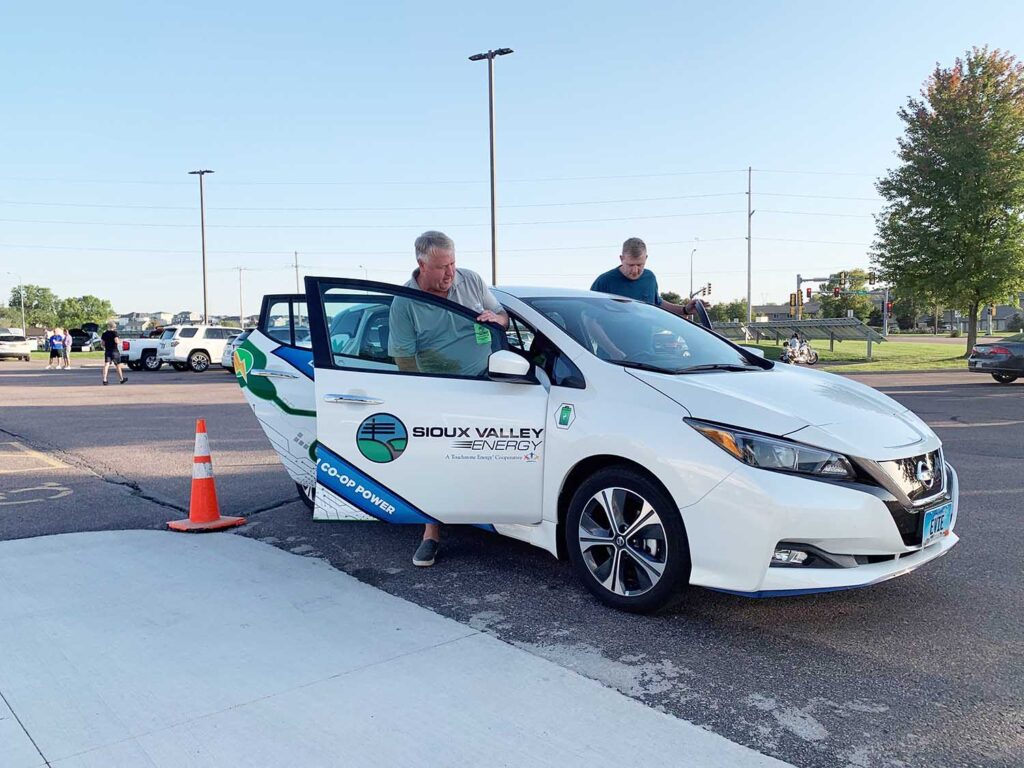
Electric cooperatives throughout the country are developing electric vehicle programs to meet the needs of their consumer-members, who are increasingly buying EVs for personal use and electrifying commercial and industrial fleets, a new NRECA report says.
The report’s findings are based on a recent survey of electric co-ops on a wide range of EV issues, including education and outreach; rebates, rates and incentives; the development of charging infrastructure; interconnection policies; and the electrification of co-op fleets.
“By learning from shared experiences and proactively addressing challenges, cooperatives can better support their members, enhance grid management, and prepare for the future growth of electric vehicles,” wrote report author Jennah Denney, NRECA electric vehicle strategy and solutions manager.
“The insights gathered from this survey will be invaluable in shaping future EV initiatives and ensuring the reliability and sustainability of cooperative grid infrastructure.”
Education
As EVs become a more common sight on America’s roadways, co-ops have shifted their member education efforts from explaining the basics of how EVs work to focusing on the best ways to charge them, the report says. Today, co-ops educate members about where to find charging stations, the best times to charge and how much it costs.
“This knowledge is essential for integrating EVs into everyday life and helping consumers make informed decisions about purchasing EVs,” the 34-page report says.
It also benefits co-ops by educating members about “grid-friendly charging behavior,” like charging their vehicles in the middle of the night when overall demand for electricity is low. EV owners can program their vehicles to start charging at home after they’ve gone to sleep.
“Targeted outreach and education efforts can foster an understanding of how individual charging behaviors impact the broader energy ecosystem,” the report says. “By promoting responsible charging practices, cooperatives can help mitigate potential grid issues and support members adopting EVs.”
Member engagement programs
Co-ops are increasingly hosting “ride and drive” events that allow members to test drive an EV or ride in one as a passenger. Some co-ops also have loaner programs that offer members the chance to borrow an EV for a few weeks or even a month to get a feel for how the vehicles would fit into their normal routines.
“This hands-on experience can be invaluable in helping potential owners understand the practicalities and realities of EV ownership and be well-informed at the time they purchase their own EVs,” the report says.
Incentives offered by co-ops
One of the most common incentives that co-ops provide to potential EV owners is to offer them rebates for installing chargers at their homes. Some co-ops also offer rebates to EV owners who agree to charge their vehicles during off-peak hours. And a unique program created by a few co-ops provides rebates to homebuilders who pre-wire developments for EV chargers.
“The survey results show that EV rate, rebate, and incentive programs significantly boost member satisfaction and engagement,” the report says. “Offering a variety of rate options and potential savings not only keeps members happy but also strengthens their loyalty.”
Developing charging stations
The report says that “workplace charging is a crucial area where cooperatives can significantly influence the adoption of electric vehicles.”
“By promoting and facilitating the installation of charging stations at workplaces, cooperatives can support the growing number of employees and businesses transitioning to electric vehicles.”
Co-ops can help by offering “workshops, informational sessions, and partnerships with local businesses to create a comprehensive approach to workplace charging that benefits everyone involved.”
By promoting workplace charging, co-ops can also improve grid stability by shifting some EV charging load away from peak evening demand to earlier daytime hours, the report says.
Electrifying co-op fleets
Some co-ops are leading by example, purchasing EVs for educational purposes and to learn more about the technology themselves.
According to the survey results, the types of EVs used by co-ops range from passenger vehicles like the Chevy Bolt and Ford Mach-E to light-duty pickups like the Ford F-150 Lightning. Some co-ops are also looking into the possibility of buying hybrid bucket trucks.
“These initiatives are aimed at enabling the cooperatives to share accurate and practical information with their members, and to demonstrate their expertise in EVs,” the report says.
Erin Kelly is a staff writer for NRECA.